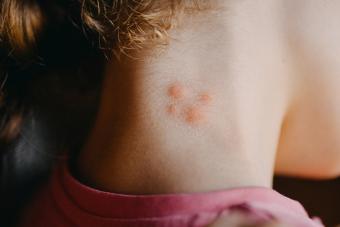
Skin cancer accounts for almost half of all cancers in the U.S. If it's caught early and treated properly, it can usually be cured. Once it spreads, treatment becomes much more difficult.
Common Cancers
The three most common types of skin cancer are:
- Basal cell
- Squamous cell
- Melanoma
Basal Cell Cancer
Basal cell cancer is the most common of all cancers. It affects over a million people in the U.S. each year. Basal cell cancers usually appear on skin that has had frequent sun exposure. The face, ears, and scalp are common sites.Basal cells are located deep in the skin. Normally, they divide and reproduce just enough to keep the skin intact and healthy. But, a mutation can happen that causes them to reproduce abnormally. The abnormal cells then grow into a tumor. Basal cell tumors often look like small nodules with a pearly appearance. They can also look like flat, waxy scars.
Basal cell cancers usually grow slowly and rarely spread to other parts of the body. But, if they are allowed to continue growing, they can result in extensive tissue damage and scarring.
Squamous Cell Cancer
Squamous cell cancer affects about 200,000 people in the U.S. each year. It often appears on sun-exposed areas, but it can occur anywhere on the body.
Squamous cells are found at and near the surface of the skin. When they become cancerous, the affected skin may look like a scaly, inflamed, or crusted-over area, a tumor-like lump, or an ulcer that won't heal. The cancer may also begin as an actinic keratosis, a dry, scaly spot that may be pink, red, brown, or black.
Squamous cell cancers do tend to spread, or metastasize, to other places in the body. They must be detected and removed early to prevent them from spreading.
Melanoma
Only about 4% of skin cancers are melanomas. If it's caught early and treated properly, melanoma can be cured. However, melanoma is considered one of the most deadly types of cancer because it metastasizes very quickly.
Melanoma can occur anywhere on the body. In dark-skinned people, melanoma seems to prefer areas that are not usually exposed to the sun, including the sole of the foot, the skin under the nails, the genitals, and the mucus membranes inside the mouth.
Melanomas arise from melanocytes, the cells that normally give skin its color. When doctors talk about moles changing color and becoming cancerous, they are usually describing melanoma. The classic melanoma has several different colors, such as black, brown, and red. It is asymmetrical; if you drew a line down the middle, the two sides would not match. It may be raised or flat. Melanomas often begin in existing moles, but they may arise on their own.
Melanoma tends to run in families. If one of your parents had melanoma, you are at higher risk than someone without melanoma in their family. However, the condition can and does occur in people with no family history at all.
Treatment for Skin Cancer
All skin cancers should be treated as soon as possible. The first step is a biopsy of any suspicious spot or mole. Your doctor may do a shave biopsy, using a razor blade to shave off a thin layer, or a punch biopsy, which removes a small cylinder of tissue. If there is any chance you have a melanoma, the doctor should do an excisional biopsy, removing the entire tumor, because knowing its thickness is important to your treatment.
If the biopsy shows that you have cancer, the next step depends on what type of cancer you have. You will need to have the tumor removed, if it wasn't already. You may also need testing to see if the tumor has spread. If it has, you may need surgery, radiation, chemotherapy, or photodynamic therapy, a kind of laser treatment.
For More Information
You can find more detailed information at The National Cancer Institute or in the LTK interview with Dr. Julia Tatum Hunter.
Who Is At Risk?
Anyone can get skin cancer. Fair-haired and fair-skinned people are at higher risk, but cancer can affect people of any skin color. Spending a lot of time in the sun increases the risk. So does having had bad sunburns as a child. People with a close relative who's had skin cancer have a higher risk than people with no family history.
Detection and Prevention
Staying out of the sun and avoiding sunburn can help prevent skin cancer. Regularly checking for new moles, changes to existing moles, sores that won't heal, or other changes in the skin can help you discover cancers early. Keep in mind that tumors do not always have the expected appearance. Check with your doctor about any new changes in your skin.







